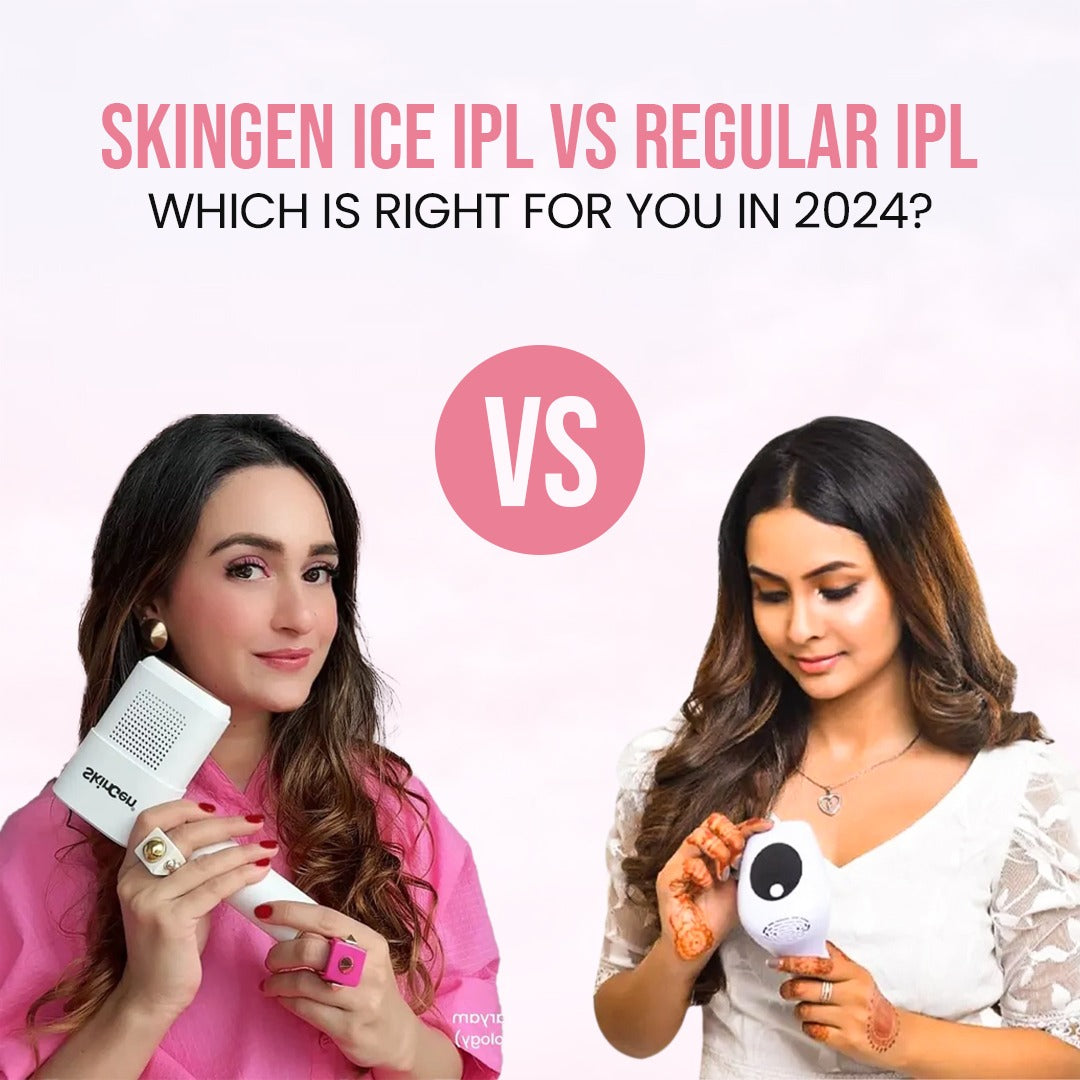Introduction to Laser Hair Removal
Embarking on the journey to smooth, hair-free skin with laser hair removal is an exciting decision. However, the effectiveness of the treatment is not just about the laser session itself but extends to the care you provide afterward.
We often hear that lasers are not suitable for dark skin hair removal, which is just a myth; consistent sessions and proper post-care make it possible.In this blog, we will delve into common Post-Laser Concerns 2024 and the solutions to ensure your path to a fuzz-free existence is as smooth as your skin.

The Laser Hair Removal Advantage
Laser hair removal works by targeting the melanin in hair follicles, disrupting their growth cycle. This process results in a gradual reduction of unwanted hair, offering a longer-lasting solution compared to traditional methods like shaving or waxing. The treatment is versatile, suitable for various body areas, and is generally well-tolerated by most individuals.
Expected Results and Recovery Time
Understanding the anticipated outcomes and recovery timeline is crucial. While laser hair removal is renowned for its efficacy, it's essential to set realistic expectations. The recovery time post-treatment varies, and it's normal to experience mild redness and swelling initially.

Navigating Common Post-Laser Considerations:
After undergoing laser hair removal, it's common to encounter specific post-treatment concerns as your skin undergoes the transformative process. Understanding these Post-Laser Concerns 2024 and how to address them is essential for a smooth and successful recovery. Let's explore the typical post-laser concerns and effective solutions to ensure your journey to hair-free skin is as seamless as possible.
-
Redness and Swelling
One of the most common post-laser concerns is redness and swelling in the treated area. This is a natural response to the laser's impact on the hair follicles. To alleviate these symptoms, consider using cooling techniques, over-the-counter creams, and avoiding activities that may further irritate the skin.
-
Skin Sensitivity
Your skin may become more sensitive after a laser session. This calls for a tailored skincare routine, including gentle products and diligent sun protection. Understanding how to care for sensitive skin will contribute to a smoother recovery.
-
Itching or Irritation
Itching and irritation may occur as the treated hair follicles shed. Resist the urge to scratch, and instead, opt for calming lotions or creams. If the itching persists, consulting with your dermatologist can provide tailored solutions.
-
Changes in Pigmentation
Temporary changes in pigmentation, such as hyperpigmentation or hypopigmentation, are not uncommon. Patience is key, as these changes typically normalize over time. Sunscreen becomes your best friend to protect the treated area from further pigmentation shifts.

Managing Skin Sensitivity During Laser Hair Removal Sessions
Laser hair removal is a transformative and effective method for achieving smooth, hair-free skin. However, managing skin sensitivity during these sessions is crucial to ensure a comfortable experience and minimize potential side effects. Here are practical tips to help you navigate and alleviate skin sensitivity during laser hair removal sessions:
-
Choose a Reputable Brand:
When considering laser hair removal and Post-Laser Concerns 2024, selecting a certified and experienced laser brand is a pivotal decision that directly impacts the effectiveness and safety of the treatment. A reputable brand ensures the best laser hair removal machines that the equipment meets industry standards and is designed for optimal performance. Here's why opting for a certified and experienced laser brand is essential. Click here
-
Communicate Your Sensitivity:
Clearly communicate any existing skin sensitivities Specifically face and upper lip hair removal or concerns to your technician before the session. This information allows them to tailor the treatment to your specific needs and adjust the laser settings accordingly.
-
Perform a Patch Test:
Request a patch test before the full session to gauge how your skin reacts to the laser, whether it's for underarms or other private parts of hair removal. This small test area allows both you and the technician to assess sensitivity and make necessary adjustments, ensuring a more comfortable experience during the complete session.
-
Avoid Sun Exposure:
Minimize sun exposure for at least a few weeks before your laser hair removal session. Sunburned or tanned skin is more prone to sensitivity and adverse reactions during laser treatment. Consistently use broad-spectrum sunscreen with a high SPF to protect your skin.

Managing Itching or Irritation After Laser Hair Removal
Itching or irritation after laser hair removal is a common, albeit temporary, side effect as the treated hair follicles shed. While this sensation is a natural part of the healing process, there are several effective strategies to manage and alleviate itching or irritation.
Here's a comprehensive guide on dealing with post-laser itching:
-
Avoid Scratching:
The urge to scratch can be intense, but it's crucial to resist. Scratching can exacerbate irritation, potentially leading to redness and discomfort. Instead, opt for gentler methods to address the itching sensation.
-
Apply a Calming Lotion:
Use a soothing lotion containing ingredients like aloe vera, chamomile, or calendula. These natural calming agents can help alleviate irritation and promote skin comfort. Apply the lotion gently to the treated area, ensuring it is well-moisturized.

-
Cool Compress:
Applying a cool compress to the irritated area can provide instant relief. Use a clean, soft cloth soaked in cold water and place it on the skin for a few minutes. This helps constrict blood vessels, reducing inflammation and soothing the skin.

-
Over-the-Counter Anti-Itch Creams:
Consider using over-the-counter anti-itch creams or ointments containing ingredients like hydrocortisone. These topical treatments can effectively reduce itching and inflammation. However, it's advisable to consult with your healthcare provider before using any new product.
Preventing Changes in Pigmentation After Laser Hair Removal
Changes in pigmentation, such as hyperpigmentation (darkening) or hypopigmentation (lightening), are potential concerns after a laser hair removal session. While these changes are often temporary, taking proactive steps can help minimize the risk. Here's a comprehensive guide on how to avoid changes in pigmentation after a laser session
-
Avoid Tanning
Avoid using tanning beds or excessive sunbathing before and after a session, whether using the hair removal machine for males or females. Tanning heightens skin melanin levels, increasing the risk of pigmentation changes during laser treatment.
-
Avoid Harsh Skincare Products:
For a few days before and after your laser session, steer clear of harsh skincare products, including exfoliants and products containing strong acids. Opt for gentle, fragrance-free cleansers and moisturizers to protect the skin barrier

-
Use a Gentle Cleanser:
During the initial recovery period of Post-Laser Concerns 2024, opt for a mild, gentle cleanser to avoid unnecessary irritation. Harsh cleansers can disrupt the skin's healing process and contribute to pigmentation changes.
-
Use Sunscreen Regularly:
Consistently apply sunscreen to the treated area, even if you're indoors. UV rays can penetrate windows, so maintaining sun protection is essential during the entire post-laser recovery period.

Potential Side Effects and When to Seek Professional Help:
While laser hair removal is generally safe, being aware of potential side effects is crucial. Uncommon side effects or signs of an allergic reaction should prompt you to seek professional help promptly. Your dermatologist can provide guidance tailored to your specific situation.
Long-Term Care and Maintenance:
To maintain your laser hair removal results, adhere to recommended aftercare practices. Adjust your skincare routine post-treatment, avoid excessive sun exposure, and schedule follow-up sessions at appropriate intervals. Consistency is key to achieving and preserving silky-smooth skin, especially in areas where hair growth is typically stubborn, such as nose and chin hair removal.
-
Adhere to Recommended Sessions:
Follow the recommended number of laser sessions advised by your technician. Multiple sessions are usually necessary to target hair follicles in different growth cycles, ensuring comprehensive hair reduction.
- Scheduled Follow-Up Sessions:
Schedule periodic follow-up sessions as recommended by your laser technician. These sessions help address any regrowth and maintain the effectiveness of the treatment over time.
- Avoid Hair Removal Alternatives:
Refrain from using alternative hair removal methods, such as waxing or plucking, which can interfere with the laser hair removal process. Shaving is typically the preferred method between sessions.

- Patience During Hair Shedding:
Be patient during the hair shedding process that follows each session. It's normal for treated hairs to fall out gradually. Resist the urge to use other hair removal methods during this period.
- Maintain Healthy Skin:
Prioritize overall skin health by staying hydrated, eating a balanced diet, and incorporating skincare practices that support skin resilience. Healthy skin responds better to laser treatments.
- Consider Seasonal Timing:
Plan your laser sessions strategically, considering seasonal factors. Opt for sessions during periods of lower sun intensity, such as fall or winter, to minimize sun exposure post-treatment
Conclusion:
As we conclude this Post-Laser Concerns 2024, it's evident that achieving and maintaining the desired results from laser hair removal involves a partnership between individuals and skilled professionals.The journey is not just about saying goodbye to unwanted hair or hair removal machines for ladies only; it's about embracing a confident and radiant version of both genders
By staying informed, adhering to personalized care plans, and being mindful of individual skin needs, individuals can navigate the laser hair removal journey with confidence. The goal is not only to achieve smooth, hair-free skin but also to empower individuals to feel comfortable and confident in their own skin, celebrating the beauty of their unique journey. See more


